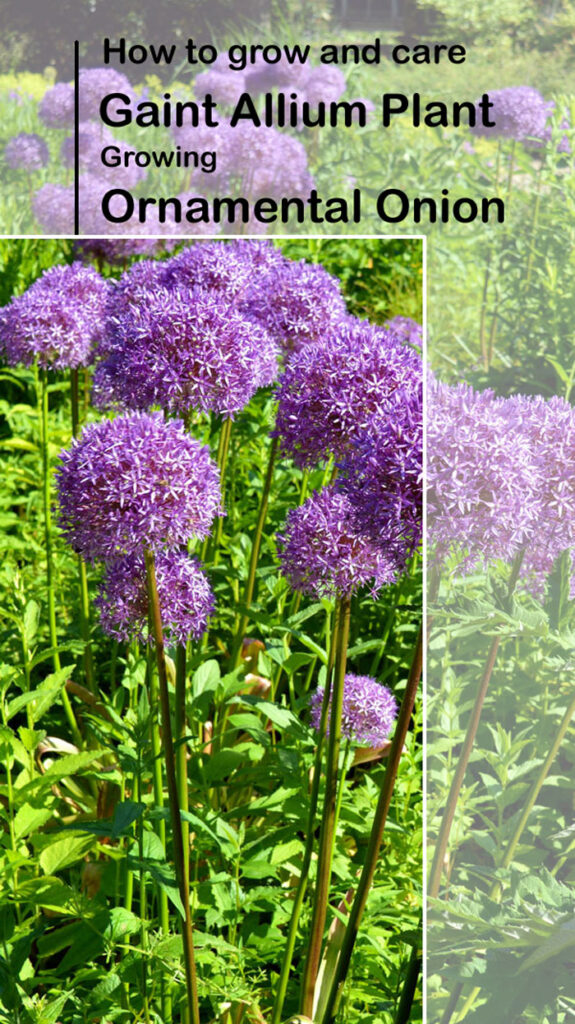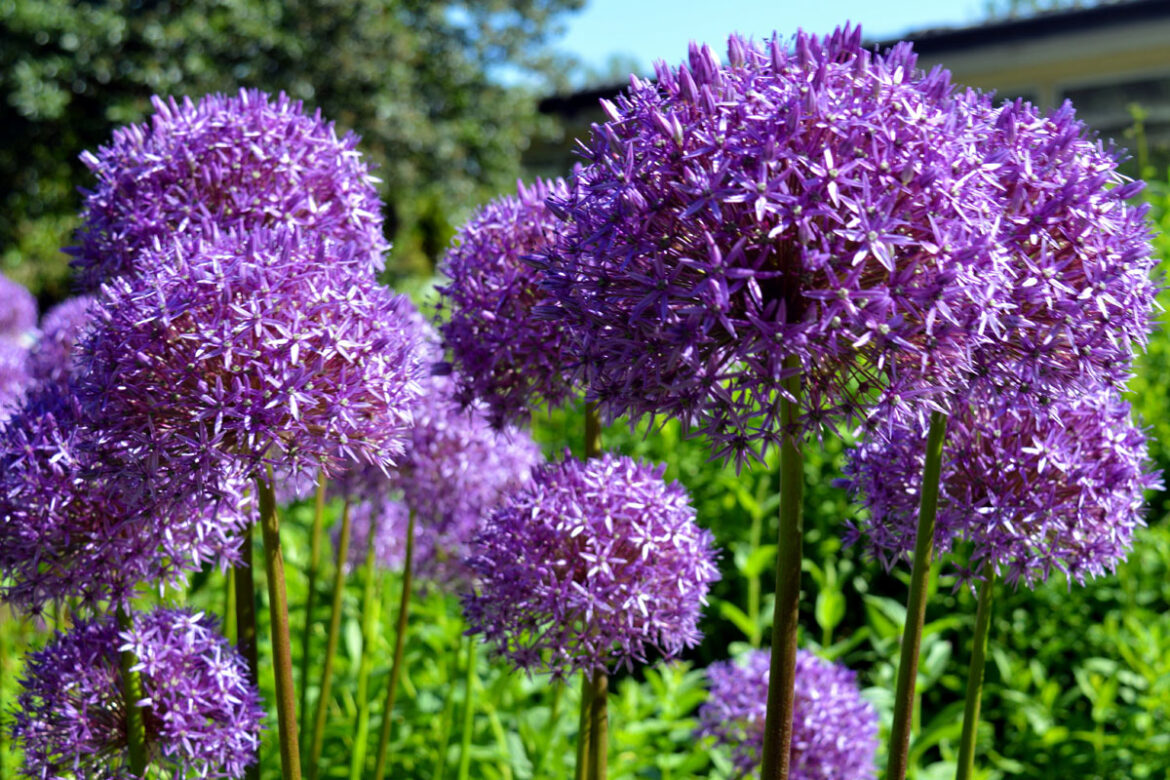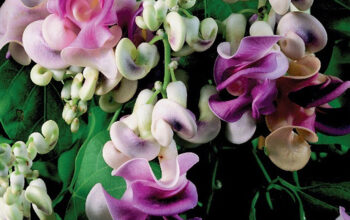Gaint Allium Plant (Ornamental Onion)
A native of Asia, Allium giganteum, popularly known as “giant onion” or “Ornamental Onion” is one of the largest species of onion, native to central and southwestern Asia, but grown widely around the world as a flowering garden plant. Among the commercially grown Allium species, it grows to a height of 1.5 meters. Soon after the umbels appear, attractive fruiting umbels appear with small globes of purple hues. Gaint Allium Plant produces large, deep violet umbels but is shorter than ‘Globemaster’. The sulfides present in flowers, seeds, leaves, and stems could make people feel sick and cause them to vomit.
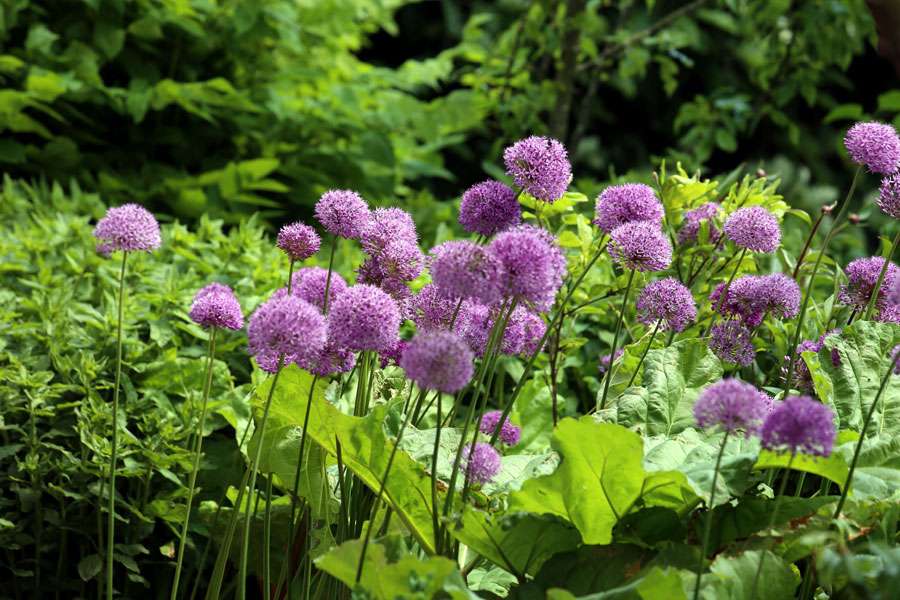
Overview Allium giganteum Plant
Scientific name Allium giganteum
Common name Giant onion, ornamental onion.
Plant type Flowering Perennial plant
Sun Full sun
Soil Well-drained, sandy loamy soil
Soil pH 5.5-6.5
Flower colors Purple.
Blooming time Spring and summer
Zone 4-9
How to Grow and Care Giant Allium Plant
As cut flowers, the blooms add an eye-popping burst of color, last for a long time, and are full of bees and butterflies. The best time to plant giant ornamental onions is in the fall. Almost all alliums are edible, but most ornamental varieties, including giant alliums, tend to be too pungent to be eaten. The giant ornamental onion is easy to grow and requires little care when planted in the right conditions.
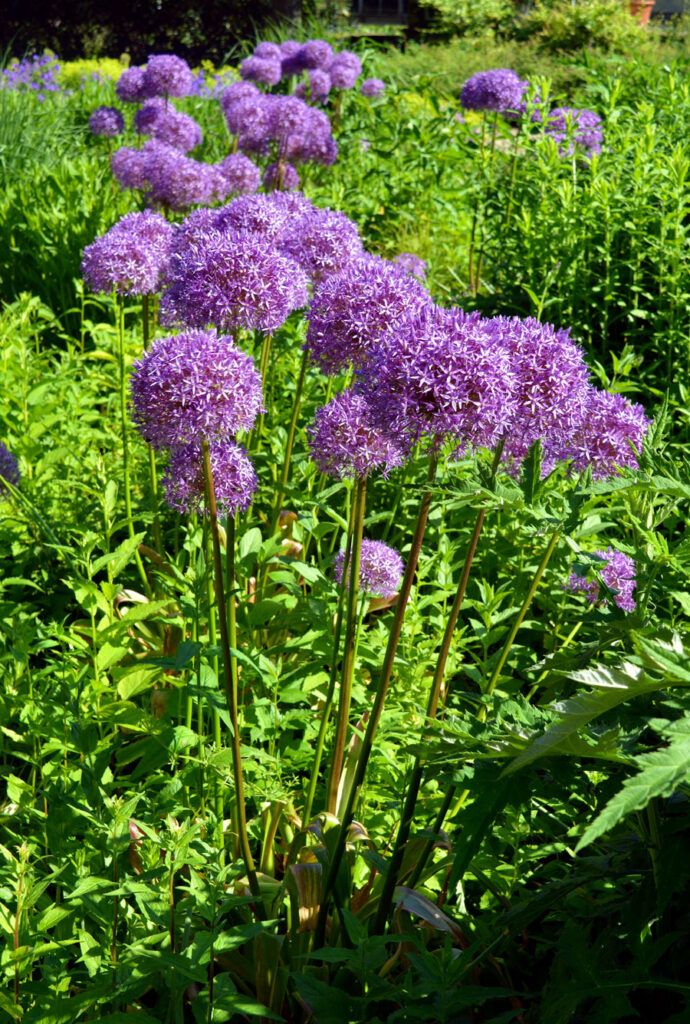
Growing from seeds
Although they can be grown from seeds, growing them from bulbs is simpler, faster, and recommended. Then fill up a flat or deep tray with compost-amended potting soil and then create and firm furrows 2 inches apart along the tray. Alternately, you can plant onions and scallions by filling six-packs with amended potting soil, moistening them, and then creating a quarter-inch-deep dibble in the centre of each cell. After planting 6-8 onions seeds or 12-15 scallions’ seeds, cover with potting mix.
Growing from cuttings
Usually, ornamental onion bulbs are propagated by dividing them. When the foliage dies back naturally in the fall, the process is easy. Plant the bulbs at least 9–12 inches apart. Be sure to amend the soil with compost before replanting. It is most likely that several bulbs will be clumped together. Separate the bulbs gently with your hands.
Sunlight
The plants are most likely to flourish in hotter climates if they receive more morning sun and afternoon shade. Typically, the more sunlight these plants receive, the taller they grow and the more flowers they produce. Alliums should be grown with low-growing herbaceous plants so that their strappy foliage is hidden and the stems do not stretch. Otherwise, your alliums will reach for more light, causing them to weaken.
Soil
Allium giganteum is best to grow them in well-draining, rich soil, though virtually any soil condition is suitable as long as it has good drainage. The best way to amend heavy clay soil is to add topsoil, organic compost, and leaf mold. Composted soils are better able to balance soil moisture levels and improve drainage, and compost also contains many essential nutrients.
Water
It requires average watering and is drought resistant. Make sure the soil is moist, checking once a week, this will help the new roots grow deeper. A finger should be able to penetrate the soil about an inch below the surface. Water the plant early in the morning to give all the leaves time to dry out completely. In fact, they handle under-watering better than overwatering. Too much water can lead to the bulb rotting.
Temperature and Humidity
The bulbs of giant ornamental onions will rot if they are grown in cool, wet, humid climates. They are best grown in zones 4 to 9, but prefer moderate temperatures with high levels of sunshine and little humidity.
Fertilizer
A moderate amount of fertilizer is sufficient for alliums. An effective fertilizer can be used throughout the growing season to enhance soil health. The best way to jumpstart their growth is to apply a light application of all-purpose fertilizer in the spring and bone meal when they are planted in the fall. Apply fertilizer again in the fall and again in the summer.
Pruning
After the foliage fades, cut back the foliage and cover the soil with mulch in the fall. In the spring, remove the mulch to allow new growth to emerge. You can deadhead alliums easily and rapidly. Wait until many of the tiny, tubular or star-shaped flowers on the umbel have started shriveling and falling off before you perform the task. With a pair of sharp, clean handheld pruners, snip the flower head at the base when it is no longer colorful.
Read also:
Growing Onions in container and Onion care in winter. How to make your own Potting soil. How to grow Spring Onions at home garden. Geranium plants growing in containers. Growing and care for boston fern. Fiddle leaf fig ficus lyrata growing and care tips. Dieffenbachia houseplants growing in containers. Devils backbone plant planting in containers.
For pin:
